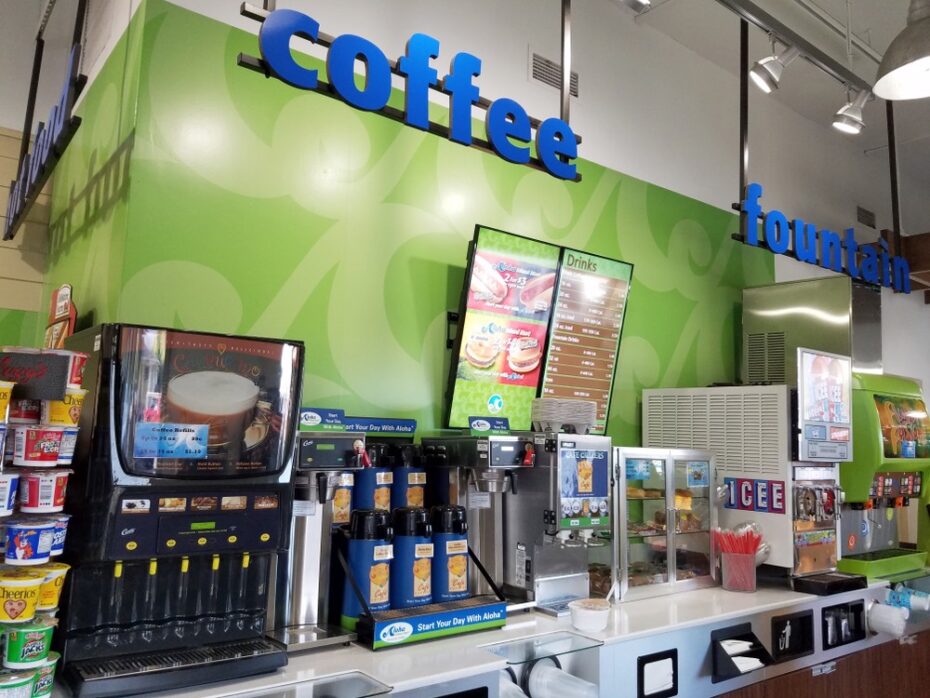Woman On TikTok Shares How She’s Saving Big Money Buying $1 Iced Coffee At A Gas Station

Picture this: You stroll into a bustling coffee shop, lured by the inviting aroma of freshly brewed java. The baristas are busy crafting meticulously crafted beverages, while customers eagerly await their caffeine fix. It’s a familiar scene, one that has become a daily ritual for countless individuals seeking their liquid fuel.
But have you ever paused to consider the financial toll of those seemingly innocent cups of coffee? Sure, indulging in your favorite Starbucks concoction is a small luxury, but what if we told you it might cost you more than you realize?
In a quest to save more money, one TikToker recently showed how she’s been getting her iced coffee fix from the gas station instead of a coffee chain like Dunkin’ or Starbucks, showing off how easy it is to save money with a simple change of habits.
“Even if you are using the rewards on the Dunkin or Starbucks app, you’re not saving that much,” a TikToker going by oktree explains in the video. “They up-charge you on the apps and on the menu, so you can use the reward system.”
@oktree I love my coffee and this has saved me so much money ffypccoffeeiicedcoffeebbudgetmmoneyssavingssavingmoneysstarbucksddunkinmmorningroutinepprideggasstationccheapddiyddiycoffeeddesserta#asmr
In another gas station iced coffee video, a commented notes that some gas stations have subscriptions where you can save big time.
“If you have a Circle K, They have a monthly subscription for $6.99 and you get to pick a soda coffee or iced coffee everyday,” one commenter writes.
In an email to Wealth Gang, oktree says she’s saving about $20 a week with the switch to gas station iced coffee.
How much money can you save by making coffee at home?
While it’s important to shed light on the financial implications of our coffee habits, it’s equally important not to deny ourselves the simple joys that bring us pleasure. Life is meant to be savored, and if coffee is one of the little luxuries that adds a sprinkle of happiness to your day, it’s worth acknowledging.
That said, it’s also important to look at the long-term financial picture. Let’s explore the notion of balance and consider the possibility of more cost-effective alternatives to going out to Starbucks or Dunkin.
If you buy a cup of coffee every workday (assuming a typical 5-day work week), you’d spend approximately $4 a cup, which totals $20 a week.
Over a year, that expense amounts to roughly $1,040 (52 weeks times $20). Now, if you were to make your coffee at home, you could drastically reduce this amount.
Let’s say you spend $15 on a bag of coffee beans, which lasts you a month (or about 20 workdays). That’s equivalent to $0.75 a cup, or $3.75 a week. Annually, this comes to about $195. The savings from making your own coffee instead of buying it at Starbucks could therefore be around $845 per year ($1,040 minus $195).
While not everyone will have the same coffee habits, and there are indeed costs associated with brewing your own coffee (like the cost of a coffee machine, electricity, and the value of your time), this basic math illustrates the potential for significant savings.
How much money can you save by switching to $1 gas station iced coffee?
Let’s now consider the alternative scenario of purchasing a $1 iced coffee from a gas station, as the TikToker suggested. Assuming the same frequency – a cup of coffee every workday – you would be spending approximately $5 a week. Over the course of a year, this sums up to about $260 (52 weeks times $5). While this cost is significantly lower than the Starbucks example, it is still more than the cost of making coffee at home.
In comparison to home brewing, which we calculated to be around $195 annually, the gas station coffee habit would cost an additional $65 per year.
This figure may not seem as substantial as the savings gained by avoiding Starbucks, but over the course of several years, these incremental costs can add up. Again, everyone’s habits will differ and convenience can often be a factor, but it’s clear that there is still a notable saving to be had by opting to make your coffee at home over buying it from a gas station.
How can a coffee habit add up financially over time?
We recently talked to a certified financial planner about how a guilty pleasure coffee habit can hurt your financial goals over time.
“Let’s say you spend $40 on coffee a week,” Donnelly told WealthGang. In a big metropolitan area like New York City, Los Angeles, or Seattle, this isn’t outside the realm of possibility for many. On a personal aside, my locally-owned and operated artisan coffee shop in Southern California charges around $7.50 for a delicious – and very addictive – large cold brew.
“That’s $160 a month,” explains Donnelly. “In a year, it amounts to $1,920 annually. Now, if you think about the opportunity cost, what could that $1,920 be doing for us if it were going to a wealth building tool of some kind, like an investment?”
“Let’s say the $1,920 was going into a Roth IRA each year,” Donnelly offers as an example. “Assuming a 10% average rate of return, after 20 years you would have $109,968. After 30 years, it would be $315,828. That’s tax-free money that can drastically change your lifestyle in retirement.”
By being mindful of our spending, we can find ways to enjoy our favorite brews without breaking the bank. From brewing your own java at home to seeking out local coffee shops with affordable options, there are ways to indulge in the aromatic embrace of coffee while being financially savvy.